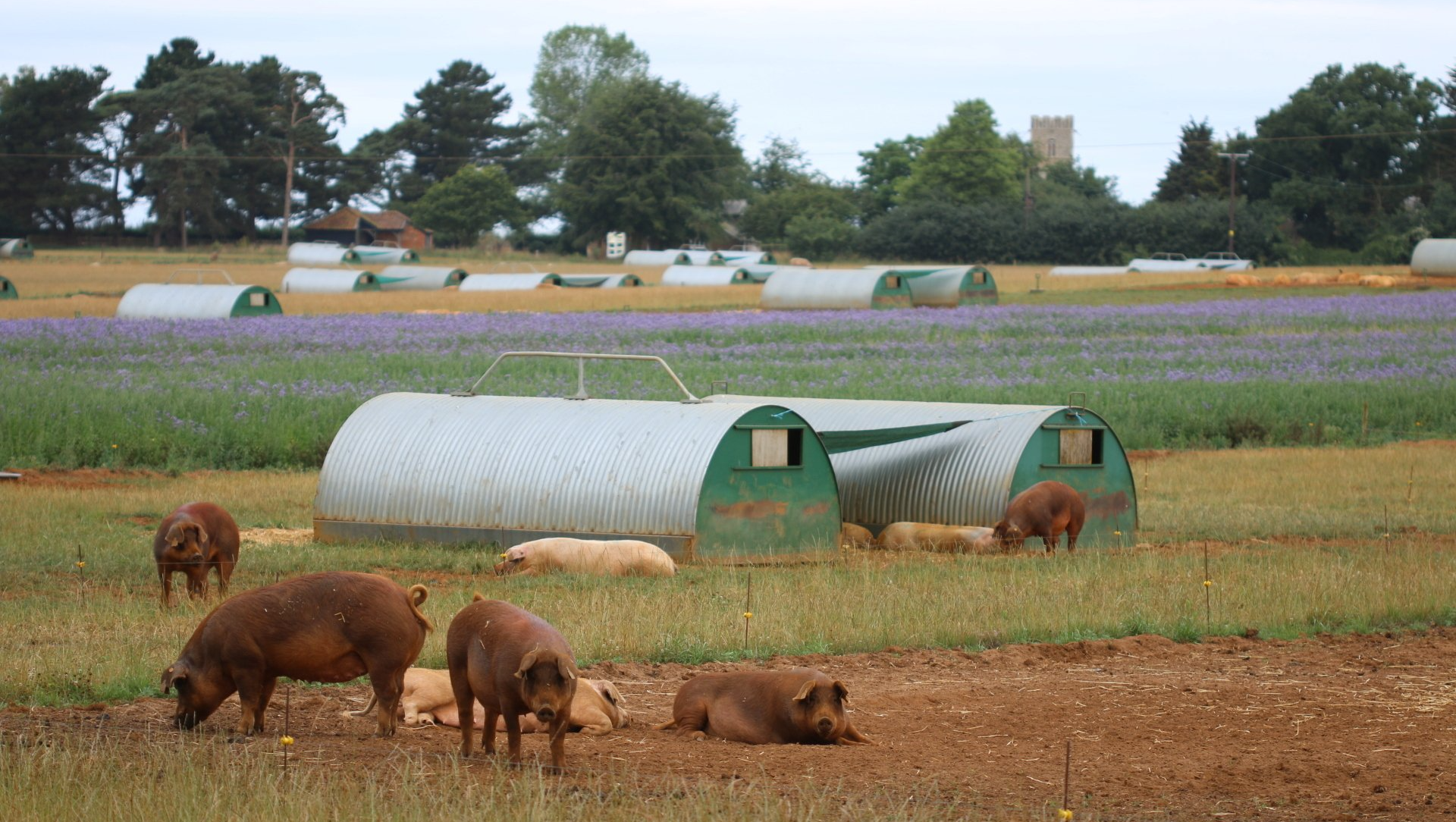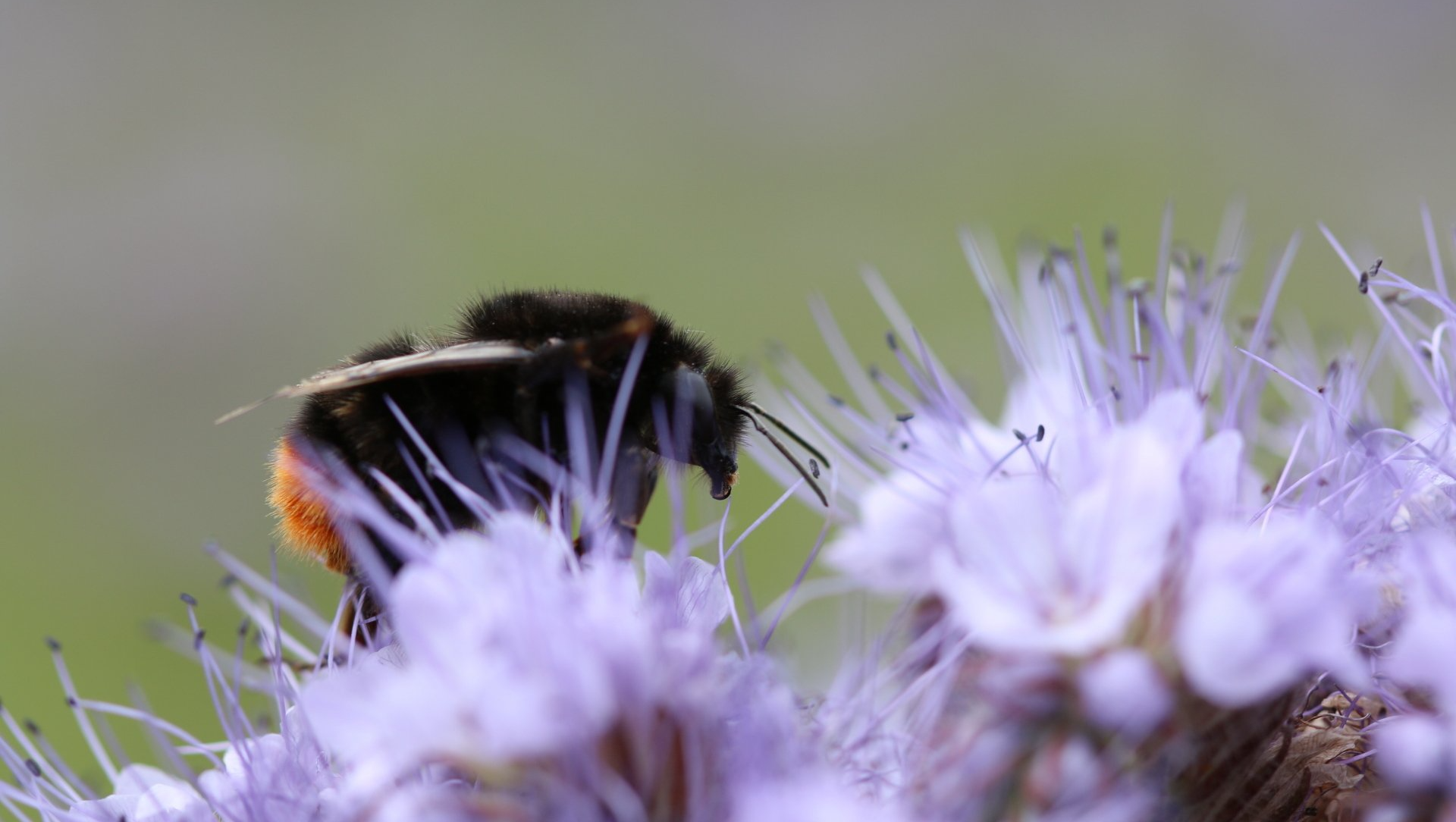Blog Layout
Sustainable Farming - Dingley Dell Pork
Mark Hayward • Sep 06, 2022
Two pig farmers from West Suffolk are making a buzz in the world of nature friendly farming by linking sustainability with habitat creation.
Up to 50% of land at Dingley Dell Pork is now sown with bee-loving pollinator mixes like clover and basilica, creating beautiful flower strips around the farm.
Here Mark Hayward explains what made them make such drastic changes - and what it has meant to the quality of the meat they now produce.

"Our journey towards the farm's "Million Bees “ project began with the question, how could we become a sustainable business, and what did that really mean. We knew that if we were a typical food production factory on an industrial estate in the suburbs of a large city we would need solar panels, waste and water management, a fleet of electric vehicles perhaps, a sustainable sourcing policy, and a host of other measures."
All well understood, and pretty mainstream if you are a manufacturing business operating in the UK. But if you’re a farm? It was a big question that needed a simple answer.
The privilege of farming in Suffolk gives us direct responsibility over three different areas of land. We have a small number of lowland marshes, some arable land, and our main business: Dingley Dell Pork. This means three different landscapes with varied ecosystems. Sitting around the kitchen table one summer evening, we decided to have a long hard think about some of the big questions we needed to answer.
Would we have to manage the number and diversity of each ecosystem? Could we improve numbers and diversity year on year? How might it be possible to improve the management of our farm to increase the amount of nature we supported in and around our commercial activities. Would this put us firmly in the sustainability camp?

We could see that our ecosystems needed replenishing from the bottom up, as more insects would attract more birds, and consequently more small mammals and predators. In order to attract more insects and pollinators, we knew we needed a diversity of plants. In a typical outdoor pig rotation the animals are moved every 3 years onto a new piece of land. This land, seeded or unseeded would be ploughed and cultivated by the pigs, and left bare in no time at all.
We decided to designed a system where we farm the pigs in strips, and move them several times in the context of the 3 years. This allows a large area to be seeded with nectar mixes that support pollinators during summer, then overwinter we can move pigs onto this rich area, and subsequently re-seed where the pigs were, for the following year. Some of the mixes we leave out during winter to provide even more support for the birds.
We have taken the humble bumblebee as our indicator species, and assume that if the native bumblebee on our farm is thriving, all pollinators will be. Its demise is linked to the intensification of agriculture, and the lack of food available in our farming landscape, particularly during June when colonies are at their peak. Last year we were able to count over 1 million bumblebees on the farm. There remain however many unanswered questions.
Do the bees we see travel to us from afar? Do the extra queens, who undoubtedly survive because of an abundance of food, nest on our farm? Because we cultivate and drill in winter and spring, could this moving of the land be detrimental? Whilst we have been bold in our planting, do we need to do so much? Because nature seems to work on a short lifecycle of birth, growth and reproduction, could we be more targeted in our approach? In our journey to be inclusive of nature, we have so much to learn and much share.

We have many food service customers who visit us, who are increasingly aware that going forward, we must look to ensure that our food production systems (be they plant or meat) do not push nature out. David Attenborough talks eloquently about the degradation of species, and we believe very much that farming is not only a big part of the problem but unquestionably a big part of the solution.
It is worth saying around 7% of our work in this arena is funded by the government, the rest is by ourselves. The national debate in agriculture for this kind of conservation works is that it should be government-funded as it has been. Going forward I believe we need a more sophisticated commercial solution. We need to approach nature-friendly farming in the way we have animal welfare. And we need the consumer at the point of sale to understand that the food they purchase directly affects nature.
Big food brands often tell us at the point of sale their animal welfare credentials, why not their nature-friendly farming credentials and positive outcomes? If we could as farmers help to commercialise nature for the buyers of our goods or consumers, I believe this kind of farming would move forward very quickly and also innovate hugely.
WildEast Blog

By by WildEast
•
05 May, 2022
Broad bushy hedges, or WildEdges , can become substantial ecological assets whilst increasing crop productivity for the farmer. WildEast estimate that 5% (62,500 hectares) of the 20% of wildlife habitat required, could come from WildEdges. Working together, WildEast and Land App will equip farmers with the toolkit that they need to transform their farmland hedges into rich wildlife habitat. 80% of the WildEast footprint is agricultural land. WildEast and LandApp aim to enable landowners to broaden hedges to increase space for wildlife. If you're having difficulty viewing the below Wild Story, please head here.
We want the East to become one of the world's biggest and best nature reserves, enriching our lives, and restoring our wild(er) hearts.
Powered by LocaliQ
Follow Us
SIGN UP FOR NEWS & UPDATES
Newsletter Sign Up
Thank you for signing up to our newsletter.
Oops, there was an error sending your message.
Please try again later.
Please try again later.
Copyright WildE ast 2021. Registered Charity No.1193252
Privacy / Terms & Conditions / Sitemap
We want the east to become one of the world's biggest and best nature reserves, enriching our lives, and restoring our wild(er) hearts.




